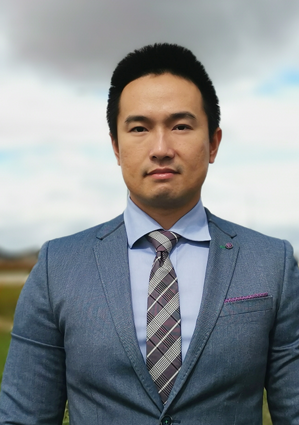
The law of large numbers is a principle that insurance companies have long relied on: sell a large number of insurance policies to a large number of people, some will incur a loss, and others will not. Eventually, all of the ups and downs cancel out, and the percentages are predictable so that you have a stable company that can serve all policy holders. It’s a system that has been working for years.
Until climate change messed it all up.

Given the new risks of natural phenomena, insurance companies are dealing with greater uncertainty than ever before. That’s something that associate professor of economics Dr. Hong Li [1] is looking to investigate in his new study “Climate Change and Property and Casualty Insurance: A Risk Management Perspective,” a project that received a SSHRC Insight Development Grant. [2]
Dr. Li aims to both understand the impact of climatic disasters on insurance companies and to propose more effective risk management strategies.
"If the insurance company can better understand time and risk, if there is a more accurate and reliable predictive model, then it helps to better prepare,” says Dr. Dr. Li. “If you have a better understanding of how likely an event is going to occur and how severe it could be, you can put aside more resources.”
While this is Li’s first foray into climate risk, his research program has long focused on longevity risk, including the impact on pension funds and retirement systems due to the increase in life expectancy. “Climate risk is also a systemic risk that poses a threat to the entire insurance industry and cannot be mitigated through the principles of large numbers,” he says.
Since there are privacy issues around working directly with data from specific insurance companies, Dr. Li uses industrial data sets online that are anonymous and aggregated to design his predictive models for risk. Based on his conversations, Dr. Li says insurance companies are keen to see the results. “I've talked to people from the industry, and people are really interested in this idea. It's definitely important to them to come up with a better internal risk management framework,” he says, adding that maybe one day insurance companies will also lend their own data to gain even more tailored results.
Dr. Li is focusing his research on a variety of types of climate disasters, for example writing a paper on the wildfire risk in the western part of the United States in California, Oregon, Colorado and Texas, another about the impact of climate change on crop yields in the Corn Belt areas of Illinois and Indiana, and most recently the multiple risks of flood, earthquake, wind, wildfire in multiple regions to gain a more holistic view of risk. “The dependency of different kinds of risk across different regions are very complex,” he says.
Since climate change itself is developing, Dr. Li is fine with his research also moving toward new possibilities rather than having all the answers at once, so long as it is useful. “We don't want to come up with a beautiful bridge that leads to nowhere. We’d rather come up with an ugly bridge that leads to change, so that the insurance companies, as well as consumers and regulators, can apply the research,” he says.
Given the pace of climate change, answers are definitely needed. Dr. Li points to the big fires in British Columbia and Hurricane Ian in the East Coast as two events that prove the need to figure this out both for the insurance industry and the people who use it. “Things are happening at a faster pace and disasters are getting more severe. As a result, many of the insurance companies have been withdrawing from certain markets. For example, an unprecedented number of home insurance companies left Florida in 2022 because the frequency and magnitude of hurricanes there are getting too high and it is not profitable anymore. ” says Dr. Li.
“So, it is really an urgent issue. But if we can better predict climate events, the companies can manage their internal capital more optimally, share their risk with capital markets more effectively, and still stay in the market to make a profit. And more importantly, people still get coverage.”
